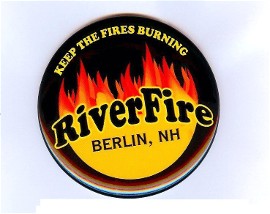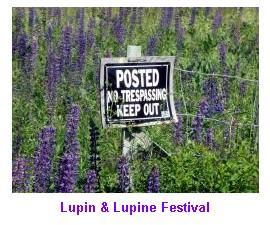Rates of nonmedical prescription opioid use and opioid use disorder double in 10 years. Almost 10 million U.S. adults report misusing prescription opioids in 2012-2013.
Nonmedical use of prescription opioids more than doubled among adults in the United States from 2001-2002 to 2012-2013, based on a study from the National Institute on Alcohol Abuse and Alcoholism (NIAAA), part of the National Institutes of Health. Nearly 10 million Americans, or 4.1 percent of the adult population, used opioid medications in 2012-2013 a class of drugs that includes OxyContin and Vicodin, without a prescription or not as prescribed (in greater amounts, more often, or longer than prescribed) in the past year. This is up from 1.8 percent of the adult population in 2001-2002.
"The increasing misuse of prescription opioid pain relievers poses a myriad of serious public health consequences."
-Nora D. Volkow, M.D., Director, National Institute on Drug Abuse (NIDA)
More than 11 percent of Americans report nonmedical use of prescription opioids at some point in their lives, a considerable increase from 4.7 percent ten years prior.
The number of people who meet the criteria for prescription opioid addiction has substantially increased during this timeframe as well, with 2.1 million adults (0.9 percent of the U.S. adult population) reporting symptoms of "nonmedical prescription opioid use disorder (NMPOUD)," according to the Diagnostic and Statistical Manual of Mental Disorders, Fifth Edition (DSM-5).
"The increasing misuse of prescription opioid pain relievers poses a myriad of serious public health consequences," said Nora D. Volkow, M.D., director of the National Institute on Drug Abuse (NIDA), which contributed funding for the study. "These include increases in opioid use disorders and related fatalities from overdoses, as well as the rising incidence of newborns who experience neonatal abstinence syndrome. In some instances, prescription opioid misuse can progress to intravenous heroin use with consequent increases in risk for HIV, hepatitis C and other infections among individuals sharing needles."
Scientists analyzed data from NIAAA's National Epidemiologic Survey on Alcohol and Related Conditions-III (NESARC-III), ongoing research that examines alcohol and drug use disorders among the U.S. population, as well as associated mental health conditions.
The study appears online today in the Journal of Clinical Psychiatry.
Prescription opioid misuse is an urgent public health problem, with drug poisoning deaths involving opioid analgesics, which includes both prescription and illicit opioids, quadrupling between 1999 and 2014, according to the Centers for Disease Control and Prevention. Emergency department visits increased by 153 percent from 2004 to 2011, based on data from the Substance Abuse and Mental Health Services Administration's Drug Abuse Warning Network.
"Given the dramatic increase in nonmedical use of prescription opioids, it is important that clinicians and patients also recognize the potent interaction of opioids with alcohol and other sedative-hypnotic drugs - an interaction that can be lethal," said NIAAA Director George F. Koob, Ph.D.
People who develop alcohol use disorder at some point in their lives are nearly twice as likely to also develop opioid use disorder, based on NESARC-III data.
Similar to other substance use disorders, prescription opioid use disorder includes symptoms such as:
taking the drug in larger amounts or over a longer period than was intended
the persistent desire to cut down or control use/unsuccessful efforts to do so
failure to fulfill major role obligations at work, school or home as a result of prescription opioid use
symptoms of tolerance and/or withdrawal
Rates of nonmedical prescription opioid use were greatest among men, those with annual incomes less than $70,000, those previously married, and with a high school-level education or less. Use was greater among whites and Native Americans and those living in the Midwest and West.
Study results also show that few people misusing prescription opioids receive treatment. Based on NESARC-III data, only about 5 percent of people misusing prescription opioids in the past year and 17 percent of those with prescription opioid use disorder ever receive help. Evidence-based treatment options for addiction to prescription opioids include medications and behavioral counseling approaches.
"The national data from NESARC-III substantially advances what we know about prevalence, co-occurring disorders and treatment rates," said senior author Bridget Grant, Ph.D., Ph.D., chief of the NIAAA Laboratory of Epidemiology and Biometry. "Prior to this analysis, there was a lack of current epidemiologic data on nonmedical prescription opioid use and prescription opioid use disorder using DSM-5 criteria."
Based on the 2012-2013 NESARC-III data, 2.1 percent of U.S. adults (4.8 million) have ever had prescription opioid use disorder in their lifetime and 0.9 percent had this disorder in the past year, according to DSM-5 criteria. This compares to 1.4 percent lifetime and 0.4 percent past year rates in 2001-2002, with slightly different criteria under the DSM-IV. Rates for 2012-2013 NESARC-III using DSM-IV criteria were 2.9 percent and 0.8 percent, respectively.
Overall, the study found that nonmedical prescription opioid use among U.S. adults has increased by 161 percent from 2001-2002 to 2012-2013 while prescription opioid use disorder has increased by 125 percent. The authors suggest that this may be due in part to increase in opioid prescribing and dosage, lessened perception of risk because of its legality, and lack of understanding of addictive potential.
The researchers found that nonmedical prescription opioid use and prescription opioid use disorder are linked to other drug use disorders, and a variety of mental health disorders including posttraumatic stress disorder, and borderline, schizotypal, and antisocial personality disorder. Persistent depression and major depressive disorder are linked to nonmedical prescription opioid use, while bipolar I disorder is linked to prescription opioid use disorder.
The National Institute on Alcohol Abuse and Alcoholism, part of the National Institutes of Health, is the primary U.S. agency for conducting and supporting research on the causes, consequences, prevention, and treatment of alcohol abuse, alcoholism, and alcohol problems. NIAAA also disseminates research findings to general, professional, and academic audiences. Additional alcohol research information and publications are available at:
http://www.niaaa.nih.gov.
The National Institute on Drug Abuse (NIDA) is a component of the National Institutes of Health, U.S. Department of Health and Human Services. NIDA supports most of the world's research on the health aspects of drug use and addiction. The Institute carries out a large variety of programs to inform policy, improve practice, and advance addiction science. Fact sheets on the health effects of drugs and information on NIDA research and other activities can be found at
www.drugabuse.gov, which is now compatible with your smartphone, iPad or tablet. To order publications in English or Spanish, call NIDA's DrugPubs research dissemination center at 1-877-NIDA-NIH or 240-645-0228 (TDD) or email requests to drugpubs@nida.nih.gov (link sends e-mail). Online ordering is available at drugpubs.drugabuse.gov. NIDA's media guide can be found at www.drugabuse.gov/publications/media-guide/dear-journalist, and its easy-to-read website can be found at www.easyread.drugabuse.gov. You can follow NIDA on Twitter (link is external) and Facebook (link is external).
About the National Institutes of Health (NIH): NIH, the nation's medical research agency, includes 27 Institutes and Centers and is a component of the U.S. Department of Health and Human Services. NIH is the primary federal agency conducting and supporting basic, clinical, and translational medical research, and is investigating the causes, treatments, and cures for both common and rare diseases. For more information about NIH and its programs, visit
www.nih.gov.
Posted 6/27/16















 1
1 2
2 3
3 4
4 5
5




